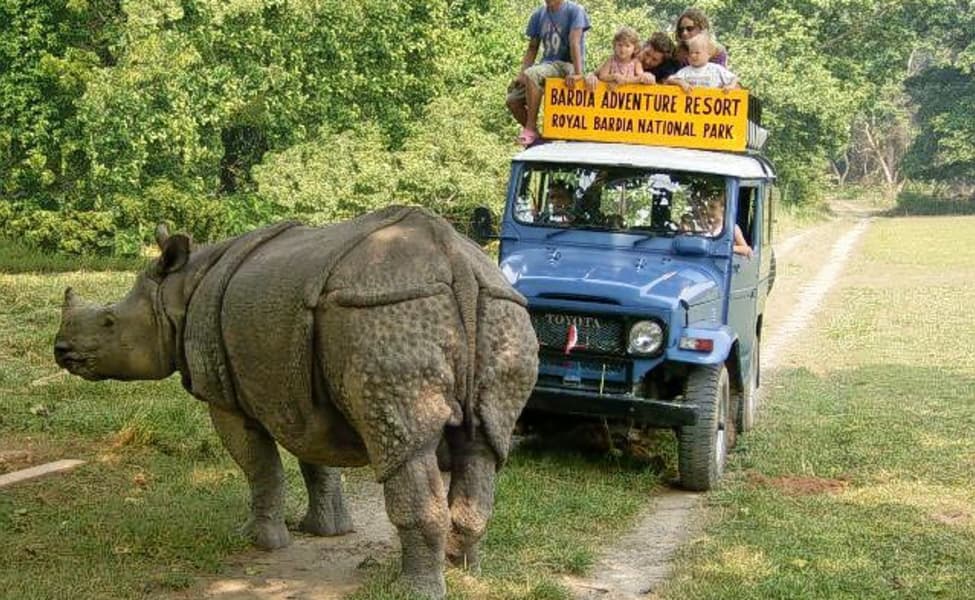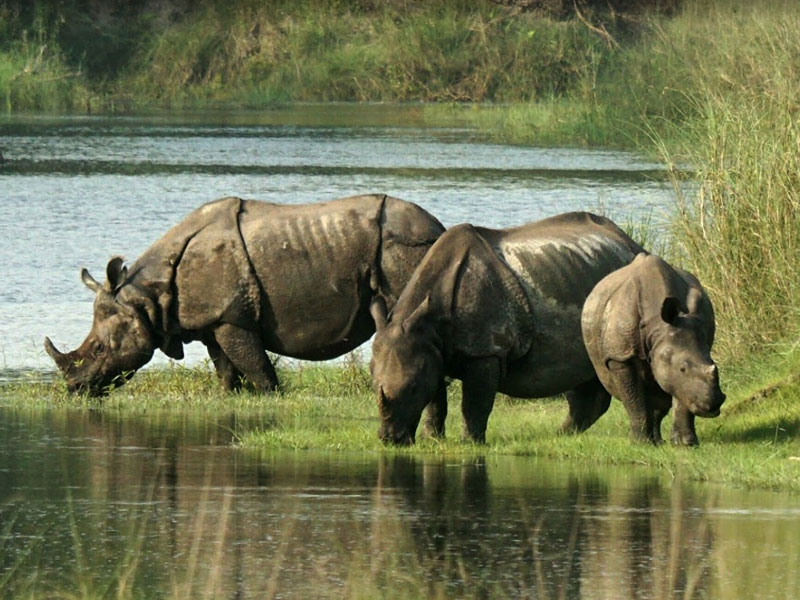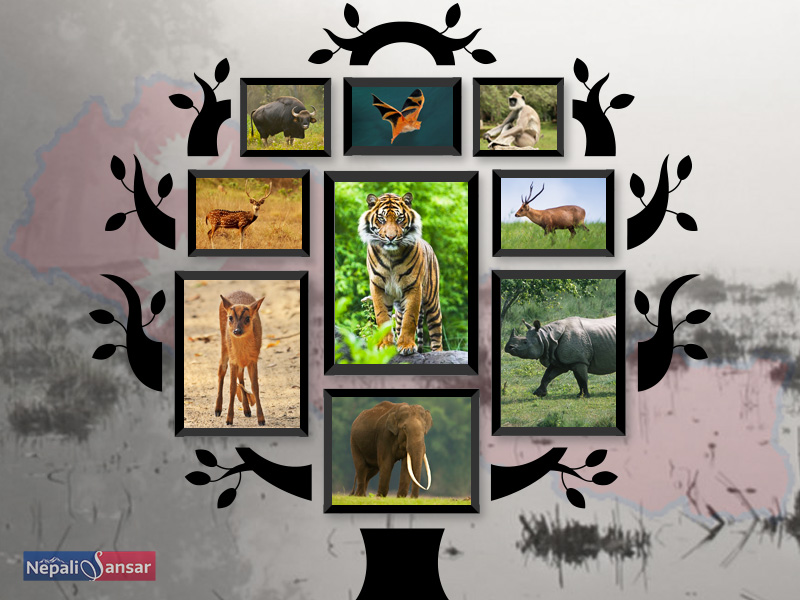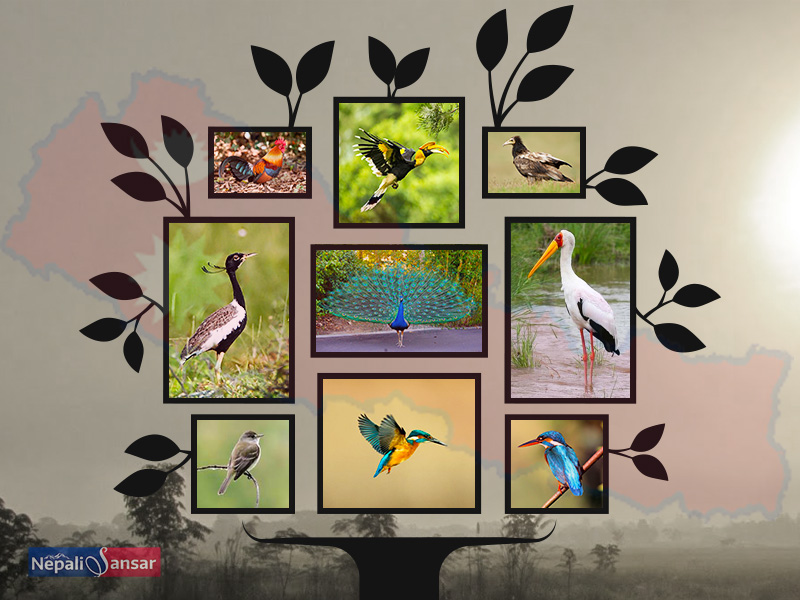The post Chitwan National Park Beckons Tourists appeared first on Nepali Sansar.
]]>The park had shuttered the tourism activities at the beginning of the second of coronavirus to curb the spread of the virus.
Every year, the park stops its tourist activities during the monsoon. The internal tourism activities restart after the rains subside. However, as the activities were already hit due to the pandemic, the park decided to reopen during the monsoon itself.
All sorts of activities have been operationalized, said the park’s Chief Conservation Officer Ananath Baral says. These operationalized activities include external and internal park sightseeing.
Baral stated that the jeep safaris have begun as the roads inside the park have been fixed. One can also opt for elephant safaris, jeep rides, or even jungle walks available at the community forest next to the park.
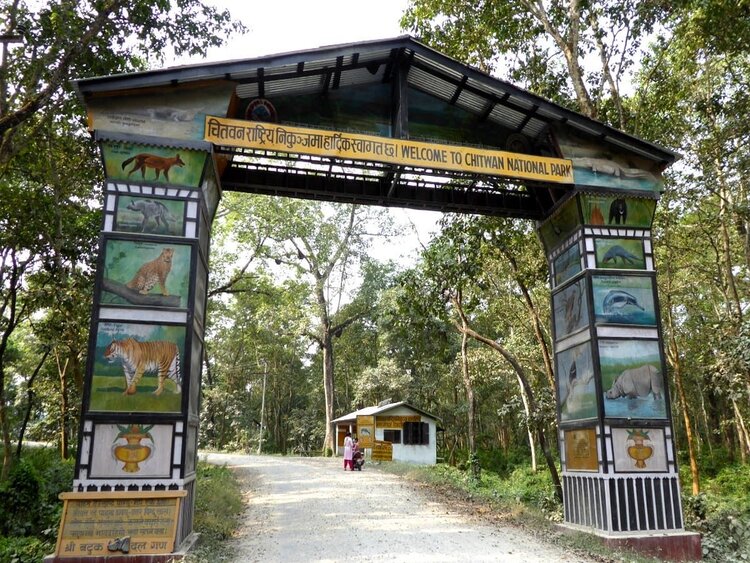
Visitors can opt for night stays in the houses built in the community forest. In addition, interested tourists can opt for boat rides across the Rapti river which traverses the park.
The President of the Regional Hotel Association in Sauraha, Deepak Bhattarai, stated that tourists coming over to Sauraha could participate in all the activities at the national park.
Stay Tuned to NepaliSansar for Latest Nepal Tourism News Updates!
More News:
- Petroleum May Become Costlier in Nepal
- India to Dispatch One Million Doses of COVID-19 Vaccines to Nepal
- SEE 2079 Registration Dates Announced! Register Now!
- SEE 2078 Application Date Released! Apply Now!
- Nepal’s Automobile Imports Surge as Economy Reopens!
The post Chitwan National Park Beckons Tourists appeared first on Nepali Sansar.
]]>The post Nepal Doubles Tiger Population, Sets Example For World! appeared first on Nepali Sansar.
]]>The TX2 Goal, initiated in 2010, aims to double the world’s tiger population by 2022. And 13 tiger range countries, including Nepal, have pledged to do so.
According to the country’s most recent tiger survey, there were an estimated 235 wild tigers in 2018, nearly twice the number of tigers in 2010. There were only about 120 of the endangered animals in 2010.
The survey was conducted by Nepal’s Department of National Parks and Wildlife Conservation (DNPWC) in partnership with WWF-Nepal.
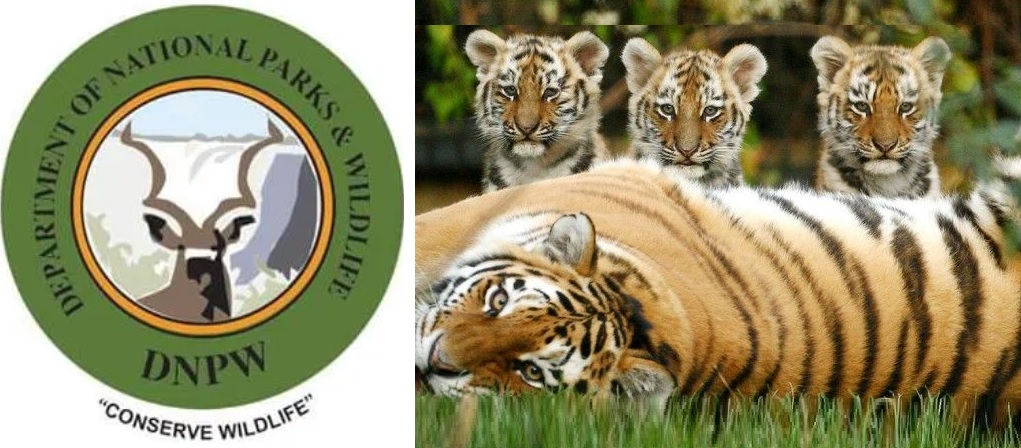
They tracked the animals in the protected areas and wildlife corridors in the Terai Arc Landscape using 4,387 camera trap images, line transects, and occupancy and prey density surveys.
Tiger Population By Location in Nepal
- Chitwan National Park – 93
- Bardiya – 87
- Banke National Park – 21
- Shuklaphanta National Park – 16
- Parsa – 18
[Also Read: Nepal National Parks – A True Harmony of Nature & The Wildlife]
On the occasion of International Tiger Day on July 29, Bishnu Prasad Shrestha, Information Officer at the DNPWC, said that Nepal has the proudest moment among the global countries.
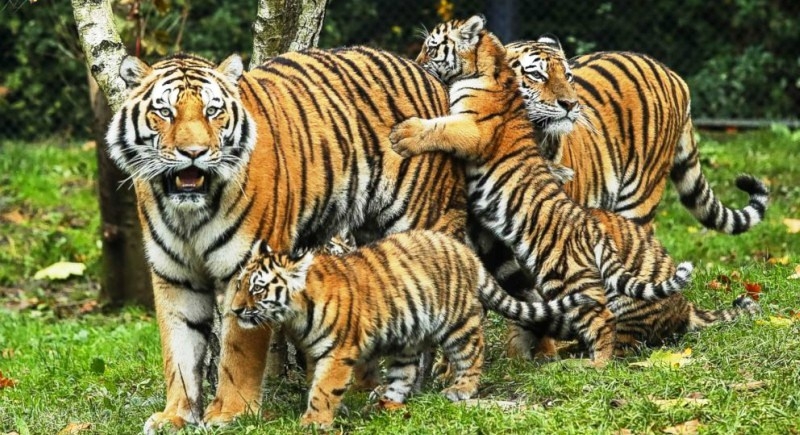
He expressed that Nepal is on track to become the first tiger range country to fulfill its commitment to double the tiger population by 2022.
Meanwhile, Maheshwor Dhakal, Chief at the Climate Change Division under the Forest Ministry, said that Nepal has many challenges despite a positive path in tiger conservation.
He exclaimed that Nepal has to deal with challenges such as habitat maintenance, human-tiger conflict, trafficking, illegal trade, climate change, and coronavirus pandemic to have the same progress in the future.
“There should be grassroots level teamwork among national bodies for the conservation and protection of tigers,” said Dhakal.
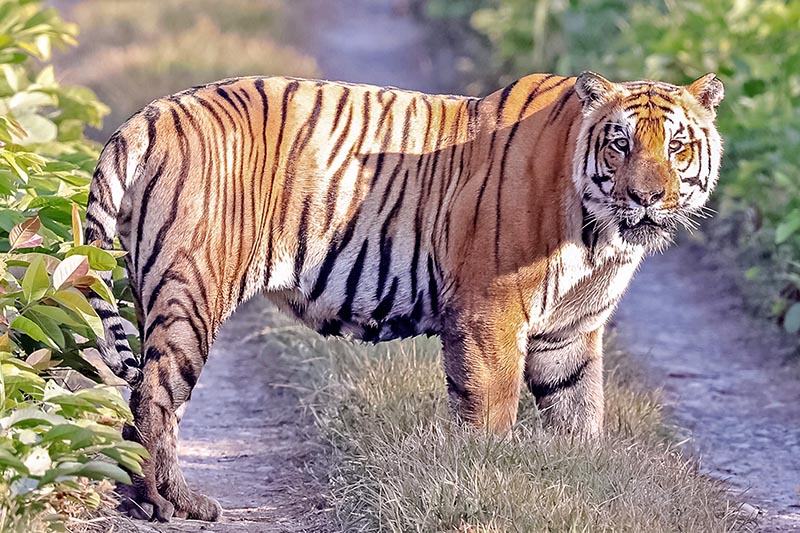
Nepal is enjoying success at the time when many of the world’s tiger population are in decline due to habitat loss and widespread poaching.
“Nepal is a great example for other tiger range countries to step up and commit to the same level of political will and excellence. While this is a huge story for tiger conservation, it also highlights the constant need to ensure the protection of key habitats and the value of a landscape approach for this species to recover and thrive,” said Ginette Hemley, Senior Vice President of Wildlife Conservation at World Wildlife Fund.
The post Nepal Doubles Tiger Population, Sets Example For World! appeared first on Nepali Sansar.
]]>The post Nepal Allocates NPR 11 Mn for ‘Rhino Census 2020’ appeared first on Nepali Sansar.
]]>According to the Department of National Parks and Wildlife Conservation (DNPWC), for the first time, the government has allocated NPR 11 million to carry out the rhino census.
Earlier, the donor agencies used to provide financial support for the DNPWC to conduct the census.
The Department has decided to conduct the rhino census in Chitwan National Park and Parsa National Park in the first phase, and Bardiya National Park and Shuklaphanta National Park in the second phase.

As per the DNPWC Spokesperson Bishnu Shrestha, the Department will deploy around 35 elephants and 60 technical personnel to count rhinos at Chitwan National Park.
In the last survey in 2015, authorities counted 645 rhinos including 605 in Chitwan National Park alone.
The Nepali Government has decided to conduct the census in response to the alarming rise unprecedented rhino deaths in the country, especially at Chitwan National Park.
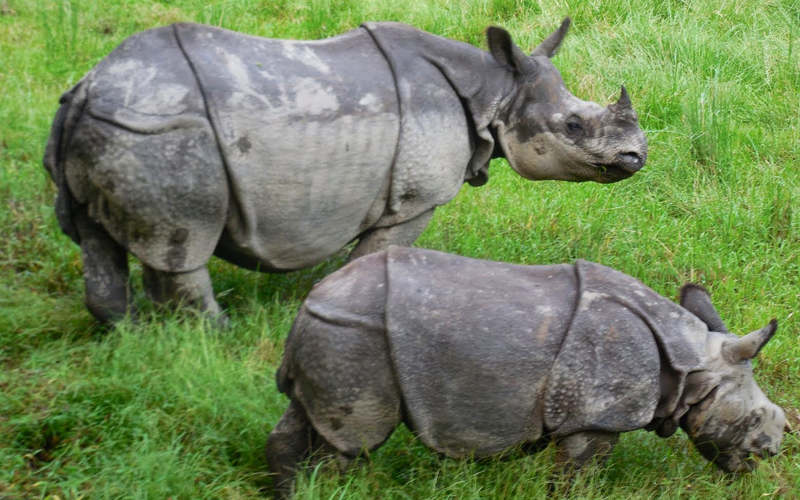
Around 55 rhinos have died since last FY 2018-19 at the Chitwan National Park. The DNPWC conducts the rhino census for every 5 years.
Some of the previous ‘Rhino Census in Nepal’ are as follows
| Year | No. of Rhinos |
| 1994 | 446-466 |
| 2000 | 612 |
| 2005 | 410 |
| 2015 | 645 |
Related Articles:
- Visit Nepal 2020: 18 Rhino Deaths Raise Alarm
- CNP Records One Rhino Death in Every Eight Days
- CNP Records 19 Decomposed Rhinos of 41 Dead
- Nepal’s CNP Records 41 Rhino Deaths in Nine Months
- Nepal to Conduct Rhino Census After ‘Four’ Years
The post Nepal Allocates NPR 11 Mn for ‘Rhino Census 2020’ appeared first on Nepali Sansar.
]]>The post CNP Records One Rhino Death in Every Eight Days appeared first on Nepali Sansar.
]]>According to information provided by the Department of National Parks and Wildlife Conservation (DoWCNP), Nepal’s largest wildlife habitat recorded 40 rhino deaths in the first 11 months of the current fiscal year between July-June. In comparison, the Himalayan nation recorded a total of only 30 one-horned rhino deaths in the entire previous fiscal.
CNP’s rhino deaths account for 89 percent of the total Nepal rhino deaths. Although the rhinos die of natural causes, the increasing number of deaths is alarming. This has urged park authorities to study the cause of increasing number of rhino deaths.
CNP to Conduct Study
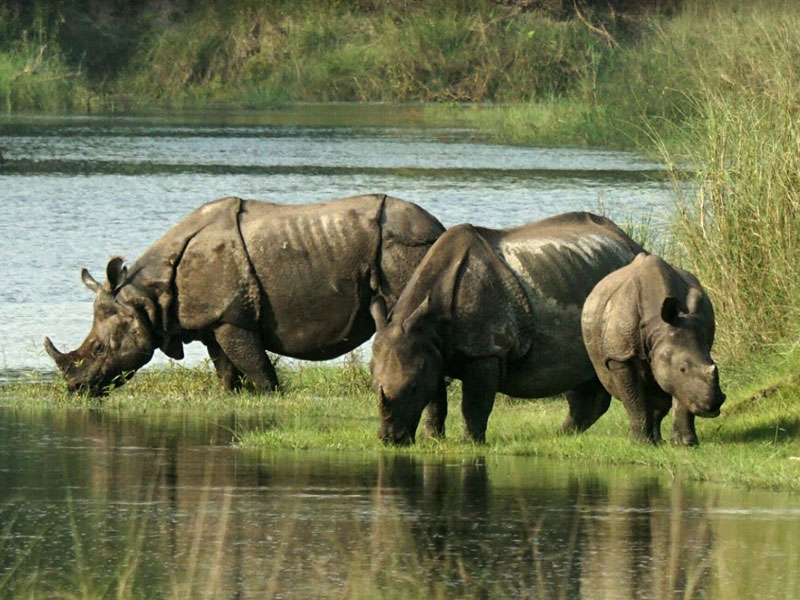
“We’ll soon conduct a study on carrying capacity of Chitwan National Park to find out reasons for high number of rhino deaths,” said Ram Chandra Kandel, DoWCNP Deputy Director General.
CNP will be conducting the study along with IUCN Asian Rhino Specialist Group, a group of Asian rhino experts.
“Experts from different countries will join our research scheduled to begin next week,” said Kandel.
The study will learn about CNP’s rhino capacity based on available resources, food chain and habitability in the park. It will also check if the impact of climate change, contamination of water and outbreak of unknown diseases is also contributing to rhino deaths.
“We have also noticed many rhinos being washed away during monsoon when rivers swell. The study will recommend ways to reduce the death of rhinos from natural disasters,” said Kandel.
Despite the increasing number of rhino deaths, the population of rhinos has not decreased say CNP park officials. The park records 50 rhino births every year.
Nepal’s Rhino History

Nepal recorded 800 rhinos in the year 1950. However, this number was drastically reduced to 100 in 1972 due to rampant poaching. After Chitwan National Park stepped up its conservation efforts, Nepal’s Rhino population increased to 645 in 2015.
The post CNP Records One Rhino Death in Every Eight Days appeared first on Nepali Sansar.
]]>The post Nepal’s CNP Records 41 Rhino Deaths in Nine Months appeared first on Nepali Sansar.
]]>The female rhino was found lying dead near a septic tank near Jagatpur in Biratnagar Municipality -23. The Himalayan nation lost 26 rhinos last year including 14 female rhinos.
“During our investigations, we found that the septic tanks cover could not hold the weight of the rhino and caved in while it was walking over it. The rhino fell into it and did not survive,” said Gopal Bahadur Ghimire, Information and Assistant Conservation Officer, Chitwan National Park (CNP).
The death of the rhino was attributed to human negligence, where the owners had failed to cover the septic tank with a concrete slab.
“We have lost 41 rhinos in the last nine months. Though most of these deaths were from natural causes or non-maligned human mistakes, there are areas where our conservation efforts should focus in the days ahead to reduce wildlife fatalities,” Ghimire said.
The figures are alarming for Nepal, which earlier drew global attention for ‘zero’ rhino poaching years.
CNP authorities claim that most of the rhinos have died due to natural causes, adding that age is the biggest cause of deaths this year.
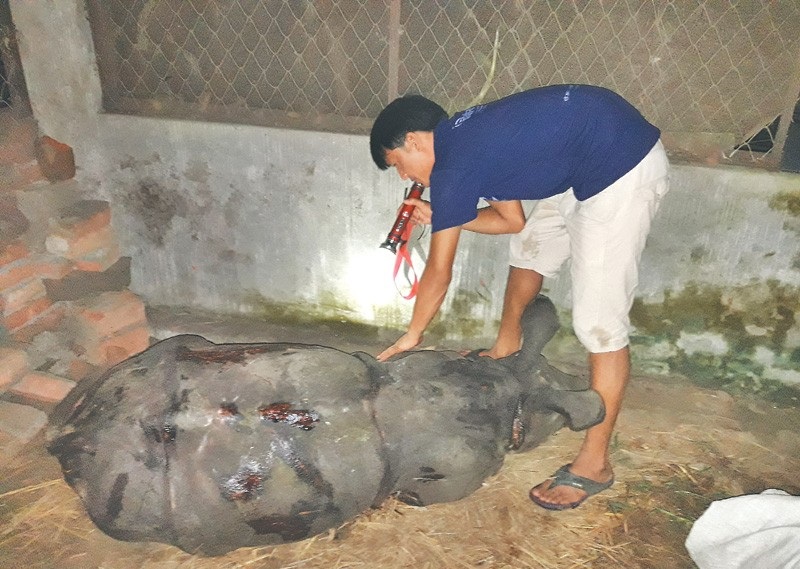
Statistics of Rhino Deaths in CNP
CNP lost the following number of rhinos between the following age groups in a period of nine months:
|
No. of Rhinos |
Age |
|
7 |
0-10 |
|
5 |
10-20 |
|
7 |
20-30 |
| 5 |
>30 years |
This includes 11 rhino deaths in the last four months alone. Ghimire say that park authorities could not identify the age of other dead rhinos.
Causes for Death
“Some rhinos die also during labor pain. This is very tragic, but this has happened,” said Ghimire. Following are the other reasons for death among rhinos:
- Fighting among themselves
- Trapping by humans (intentional or unintentional). Ghimire adds that this is the area where they can raise more awareness among people, saving the vulnerable animals
- 2018 Floods in Nepal
- Electric shocks and injuries
- Illness
“There are many factors behind their death. Though poaching has been largely controlled, rhinos are still vulnerable,” said Ghimire.
The national park has taken the matter seriously and is examining factors that contribute to the death of the rhinos.
“We have been examining the factors that contributed to the deaths of the rhinos. This is a serious matter for us,” he said.
Nepal’s First Wildlife Hospital
Nepal is also coming up with a first-of-its-kind wildlife hospital in Chitwan to ensure proper treatment for its injured and deceased wild animals.
The hospital is being constructed as a result of the rising number of death among Nepal’s wildlife.
“With the construction of the hospital, necessary medicines and technology would be installed which would ease treatment of injured and sick wildlife across Nepal,” says Dr Kamal Gaire of the Chitwan National Park.
Hope the improved provision of wildlife healthcare will bring down the number of Nepal #rhinodeaths, considerably.
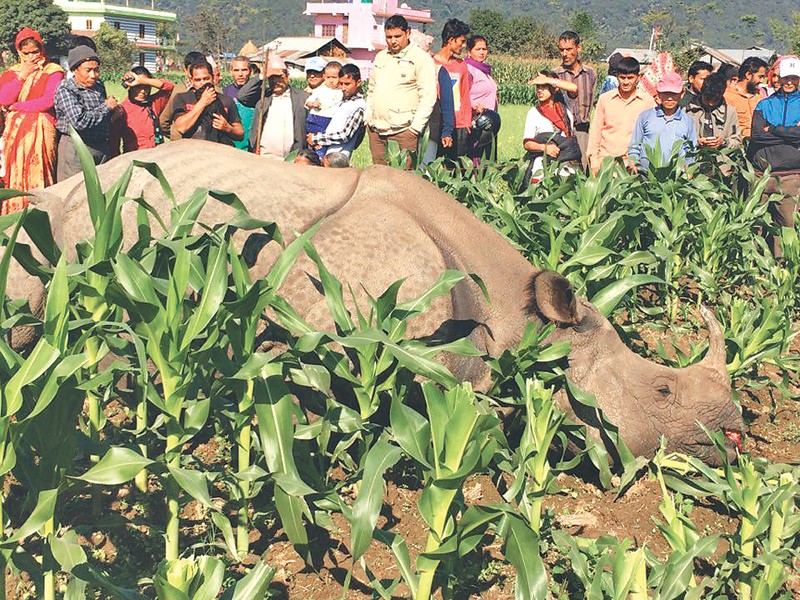
Also Read:
The post Nepal’s CNP Records 41 Rhino Deaths in Nine Months appeared first on Nepali Sansar.
]]>The post World Wildlife Day 2019: A Global Snapshot, Glance at Nepal! appeared first on Nepali Sansar.
]]>For the first time, the United Nations dedicated #WWD2019 for the rise of awareness on the safety of marine species.
For ‘Life Below Water’
This happens to be the first World Wildlife Day to stress on life below water and marine species.
“This is the first World Wildlife Day to focus on life below water. It is a great opportunity to raise awareness about the breathtaking diversity of marine life, the crucial importance of marine species to human development, and how we can make sure it will continue to provide these services for future generations,” read an official statement.
A release on WWD official site further informed that the capacity of life below water is severely impacted and the species underwater are facing assault from an onslaught of threats.
According to the WWD site, around 200,000 species have so far been identified as marine species, while there could be more millions unidentified. Given this fact, there is also a huge human dependence on oceanic resources.
The global market value of marine & coastal resources and industries is measured at USD 3 trillion per year, almost 5 percent of global GDP.
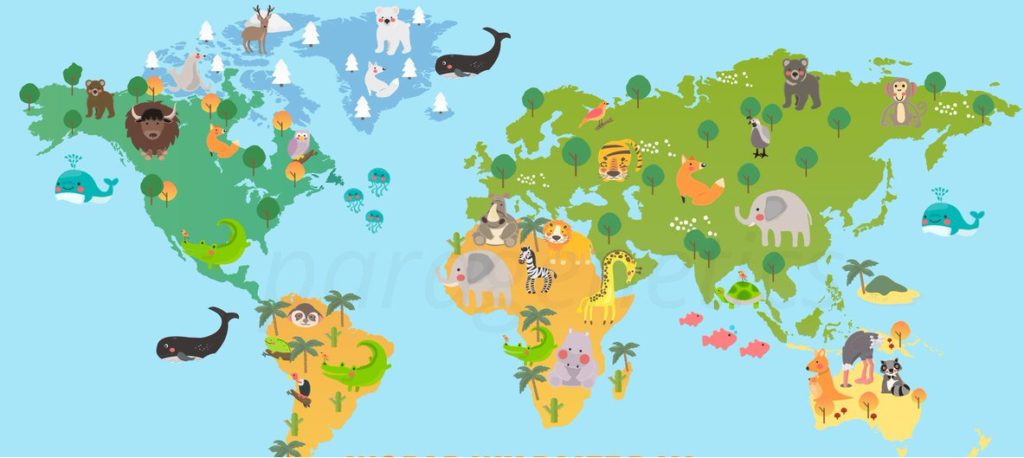
Looking at these snapshot of numbers, one can gauge the range of emphasis that ‘Life Under Water’ needs in this polluting environment!
In this regard, the United Nations and the designated authority, the Convention on International Trade in Endangered Species of Wild Fauna and Flora (CITES), urge world nations to extend their support in saving marine life.
“For marine species, CITES is at the interface between sustainable use and international trade for fisheries, working to ensure that trade in marine species listed under the Convention is legal, sustainable and traceable….
CITES plays a well-targeted role in advancing implementation of SDG 14 with trade-related measures combined with effective compliance procedures,” David Morgan, Officer-in-Charge of the CITES Secretariat said in a statement.
#WWD2019: Glance at CITES Study on Nepal’s Scenario
Like many other nations gifted with natural beauty, Nepal is also a country with rich biodiversity profile that is seen in its flora and fauna.
The country has made many achievements over the period in saving endangered species. Tigers, vultures, one-horned rhinos and more fall in the list of endangered that Nepal has been conserving!
Coming to aquatic fauna, Nepal has so far reported a list of aquatic fauna including:
- Pharping Catfish (Myersglanis blythii)
- Psilorhynchus Nepalensis
- Nepalese Minnow (Psilorhynchus pseudecheneis)
- Nepalese Snowtrout (Schizothorax macrophthalmus)
- Turcinoemacheilushimalaya
- Erethistid Catfishes (Erethistoides ascita and Erethistoides cavatura)
- Bagrid Catfish (Batasio macronotus)
- Sisorid catfishes (Pseudecheneis eddsi, Pseudecheneis crassicauda and Pseudecheneis serracula)
Different Nepali departments have been working with CITES as their support to the organization’s global cause and have also received honors for their exemplary services.
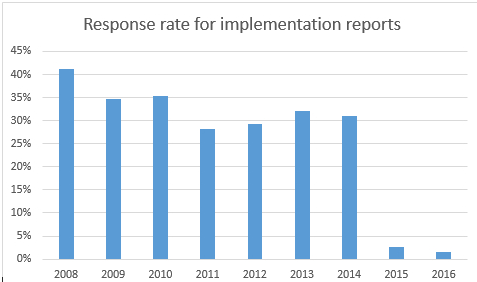
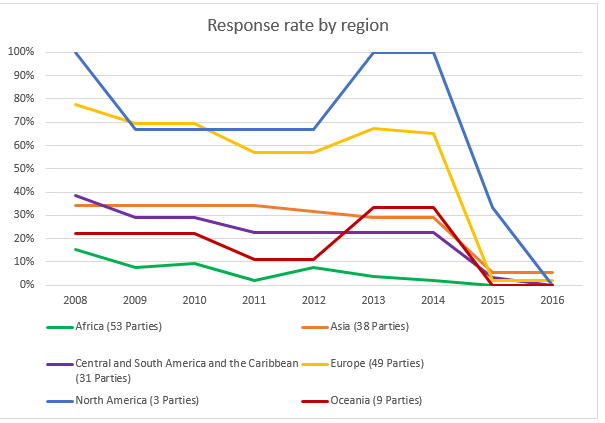
In 2006, CITES Secretary General honored the Royal Chitwan National Park Authority and the Royal Nepalese Army with the Certificate of Commendation for their efforts in combatting poaching and illegal trade of endangered species, especially leopards, rhinos and tigers.
In its last report (2012), CITES has made some key revelations pertaining to Nepal along with a special emphasis on policy gaps. Key excerpts from the report include:
- CITES was developed and implemented to regulate and control international wildlife trade, but violations of the agreement are widespread and growing world-wide, including in Nepal
- To comply with CITES in Nepal, various but discrete laws are functional.
- Many Nepali NGOs are working in biodiversity conservation and some have begun to explore illegal wildlife trade
- The Department of National Parks and Wildlife Conservation (DNPWC), Nepal’s management authority for CITES, has begun anti-poaching task forces
- The rhino population in Nepal was estimated 372 in 2005, down from a high of over 550 in 2000, because of an increase in poaching and illegal trade
- The 2008 tiger count estimated 241–304 tigers, which was a decline from 360-370 in 2010 and 34-350 in 1999-2000
- During 2004-07, 26 persons were arrested on charges of tiger poaching, and 25–29 tiger skins & 128.5 kg of bones were confiscated. The total quantity of tiger bones confiscated from poachers and traders during 2004-09 amounted to 167 kg
- Nepal has become the major route by which poachers from other nations are able to get their products in China
- The geographic setting of Nepal (porous borders with India and China) was cited as a reason of growing illicit trade. Half of the respondents, and almost all experts and government respondents stated that organized crime is prevalent and that this has encouraged poaching and illegal trade
- Some relevant laws that guide CITES implementation are: The National Parks and Wildlife Conservation Act 1973 (NPWC Act), The Forest Act 1993, The Export Import (Control)Act 1961, The Customs Act 2007, The Police Act 1995 and The Environmental Protection Act, 1997
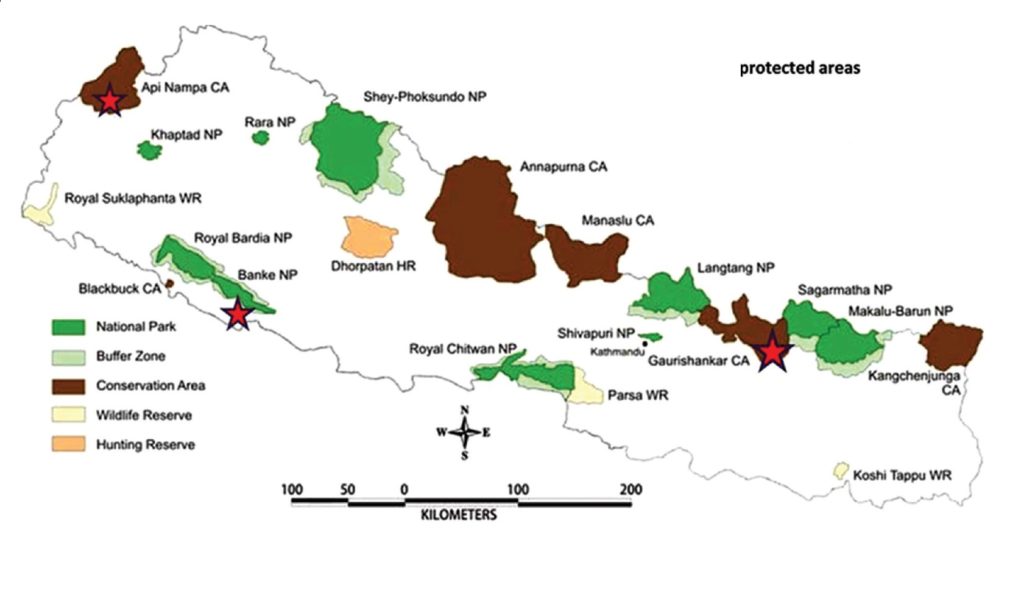
DNPWC, Department of Forests, Natural History Museum and Department of Plant Resources are the enlisted partners of CITES in Nepal as per CITES official site.
Hope Nepal’s new government functioning and newly-formulated policies will assist CITES to the possible extent in realizing the efforts to save the endangered.
The post World Wildlife Day 2019: A Global Snapshot, Glance at Nepal! appeared first on Nepali Sansar.
]]>The post Nepal National Parks – A True Harmony of Nature & The Wildlife appeared first on Nepali Sansar.
]]>But there’s still hope, thanks to our conservationists, animal lovers and government authorities! We still see natural habitats being preserved.
Countries around the world are working hard to preserve their national pride. Yes! Conservation of national flora and fauna is as important as another aspect of any economy.
Among some of the hotspots of conservation efforts and retaining nature’s glory, Nepal holds a special place. Especially after the country was appreciated for its efforts of increasing its tiger population much ahead of its 2023 deadline, we know Nepal cares for its flora and fauna.
Nepal – Home to 13 National Parks
The Himalayan Nation is home to 13 National Parks and is best known for its topography that creates a suitable environment for the flourishment of a wide range of plants, birds and animal species.
These national parks not only boost Nepal as a country devoted to conservation but also make it an engaging tourism hotspot. Tourists from around the world flock to these destinations to see Asia’s wildlife glory.
Recently, Nepal Tourism touched the 1 million tourists mark, which takes it closer to its goal of the Visit Nepal 2020 campaign, where it seeks to welcome 2 million tourists as part of its tourism promotion.
Nepal’s Wildlife-friendly Habitats are often spoken about all across!
1) Banke National Park, also known as Gift of the Earth, is spread across an area of 550 sq.km and located in Nepal’s Mid-Western Region. It received the aforementioned title after it was established as Nepal’s 10th national park in 2014. The Banke National Park has nearly 113 tree species, 107 herbal plant species and 85 shrub & climber species.
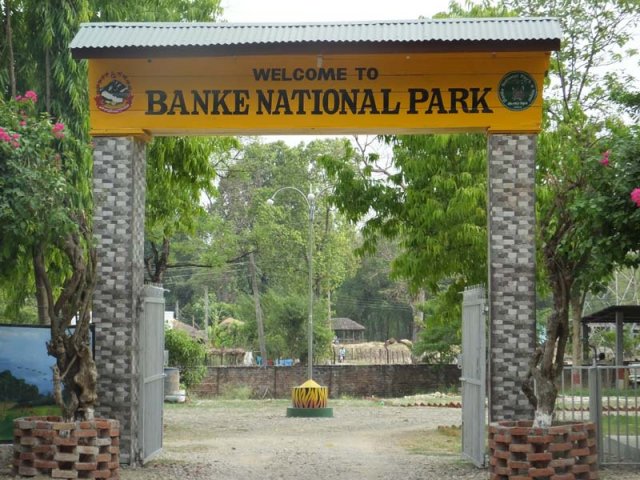
Axlewood, Khair, Semecarpus Anarcadium and Terminalia alata are some common plant species found in the park. The natural reserve is home to tigers and four-horned antelopes. The park was recognized for spotting a ruddy mongoose for the first time in 2014.
2) Bardiya National Park was established as Royal Bardiya National Park in 1988. With an area of 968 sq.km, it is considered as Nepal Terai’s largest and most undisturbed national park. It is surrounded by the Siwalik Hills in the north, the Nepalgunj-Surkhet highway in the south, Geruwa’s human settlement in the west and Babai river in the southeast.
The Tiger conservation reserve covers an area of 2,231 sq.km, which includes alluvial grasslands and subtropical moist deciduous forests. Furthermore, 70 percent of the park is covered with forests and a mix of savannah grasslands and riverine forest. Bardiya has 839 species of flora including vascular plant species of dicots, monocots, ferns and gymnosperm species. This vast habitat makes a perfect home 642 fauna species including gharial, mugger crocodiles, reptiles, amphibians, rhinoceros, wild elephants, Bengal tigers, swamp deer and Gangetic dolphins.
3) Chitwan National Park was established in 1973 and received the World Heritage Site status in 1984. Located in the subtropical inner Terai lowlands of south-central Nepal, the park covers an area of 952.63 sq.km. It spans Chitwan, Makwanpur, Parsa and Nawalpur districts. It has a monsoon tropical climate with high humidity throughout the year.
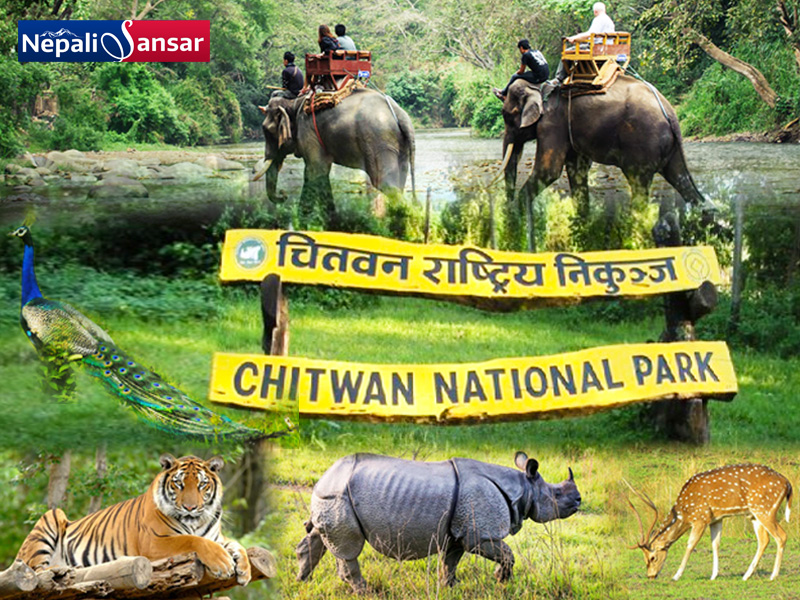
The Chitwan National Park houses sal trees that cover about 70 percent of its area and other species of flora such axlewood, beleric, balsam, cheshire pine, elephant apple, grey downey, rosewood, riverine forests, rhino apple tree and more. The park presents a perfect environment for more than 700 species of wildlife including king cobra, rock python, starred tortoise, monitor lizard, 113 species of fish, mugger crocodiles and more.
4) Parsa Wildlife Reserve Park is spread across an area of 627.39 sq.km spanning Parsa, Makwanpur and Bara districts in Nepal. It was established in 1984 and has been enjoying the Nepal National Park status since 2017. It is surrounded by Hetauda-Birgunj highway in the east and the Chitwan National Park on the west. Together with the Indian Tiger Reserve Valmiki National Park, it represents the Tiger Conservation Unit (TCU) aka Chitwan-Parsa-Valmiki.
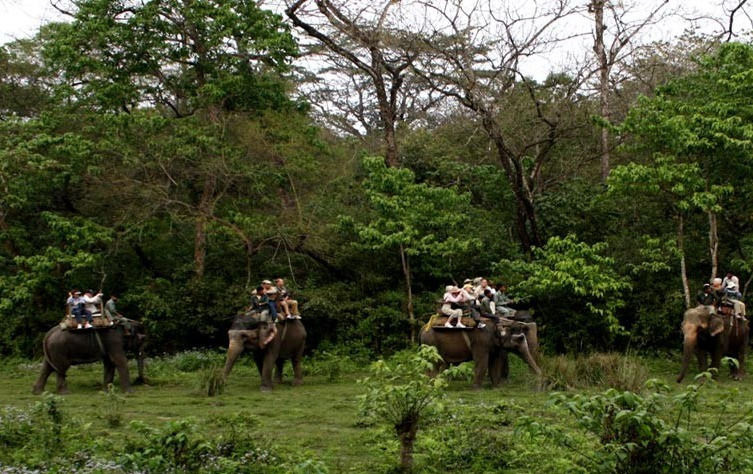
Earlier, the region was used as a hunting ground by the ruling class. The park has tropical and subtropical forests with Sal trees contributing about 90 percent of the vegetation. Parsa Wildlife Reserve has 919 species of flora, 105 gaurs and 19 Bengal Tigers.
5) Langtang National Park was established as Nepal’s first Himalayan National Park in 1976. It is also considered as Nepal’s fourth protected area. It spans Nuwakot, Rasuwa and Sindhupalchowk districts of the central Himalayan region, and is connected with Qomolangma National Nature Preserve in Tibet. It is surrounded by the Bhote Kosi and Trishuli rivers in the west and the Kathmandu Valley in the south.
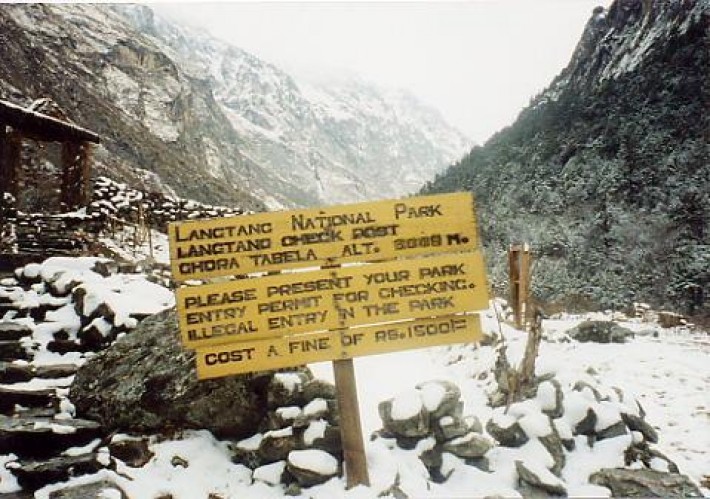
The sacred Gosainkunda lake is located inside the lake. At an altitudinal range of 6,450-m, it has 18 ecosystem variations, making it home to 14 vegetation types. It has a range of upper tropical forests to alpine scrub and perennial ice.
We’ve got more wildlife reserves to explore! Stay tuned to this page to see more updates.
The post Nepal National Parks – A True Harmony of Nature & The Wildlife appeared first on Nepali Sansar.
]]>The post Nepal to Conduct Rhino Census After ‘Four’ Years appeared first on Nepali Sansar.
]]>The census will begin in January next year said Nepal National Parks and Wildlife Conservation Department Man Bahadur Khadka. “We have thought of conducting the census next year. We are currently looking for funding to launch the project,” says Bahadur.
The census will be conducted with the prime focus on assessing the capacity of the country’s national parks to shelter rhinos.
The last rhino census was conducted in 2015, when it was found that there were 645 rhinos in Nepal with 605 of them belonged to Chitwan National Park (CNP) alone.
Besides CNP, Bardiya, Parsa and Shuklaphanta national parks are other habitats for one-horned rhinos.
The government started conducting a population census in 2015 for implementing a five-year conservation plan from 2017.
However, there is a considerable increase in the number of rhino-deaths over the last few months. In the first three months of the current fiscal, seven rhinos died of natural causes including old age, fighting and languish in the swamp in CNP. None of them were victims of poaching.
Moreover, the last fiscal year witnessed a total of 26 rhino deaths, which is the highest death toll in a year up till date.
Also Read:
The post Nepal to Conduct Rhino Census After ‘Four’ Years appeared first on Nepali Sansar.
]]>The post Come, Explore ‘The Heart of the Jungle’- Chitwan National Park appeared first on Nepali Sansar.
]]>Located in the fertile Chitwan Valley in the Terai region of the southern part of the country, the national park derives its name from two words “Chit” and “Van”, which translate to “Heart of the Jungle”.
Surrounded by Serene Environment
The Chitwan National Park (CNP) covers an area of 932 square kilometers and is a UNESCO-designated World Heritage Site.
The Narayani and Rapti rivers form the northern and western borders of the national park, while the Reu river flows through it. The Parsa Wildlife Reserve shares Chitwan’s eastern border.
The park is endowed with a wide variety of flora and fauna that attract tourists from all over the world. The lush green vegetation with the scenic Himalayas in the backdrop provides a spectacular view to nature lovers. Sal trees abound in the region and cover around 70% of the park. Grasslands cover 20% of the area and comprise some of the tallest grass in the world such as elephant grass.
A Refreshing Diverse Wildlife
Chitwan National Park (CNP) is home to over 700 species of wildlife with around 68 species of mammals and over 500 species of birds.
The one-horned rhinoceros, Bengal tiger, Asiatic elephant, four-horned antelope, gharial, gaur, striped hyena, pangolin, mongoose, painted bat, chital, hog deer, porcupine, sloth bear, clouded leopard, toddy cat, palm civet, wild dog, langur and hispid hare are some of the animals in Chitwan National Park.
The birds on view include the Bengal florican, Egyptian vulture, giant hornbill, stork, peafowl, red jungle fowl, egrets, herons, kingfishers, flycatchers and woodpeckers. Additionally, CNP has 17 species of snakes including King Cobra & Rock Python, starred tortoise and monitor lizard.
The Narayani-Rapti river system and its tributaries that run through the park are home to 113 species of fish and mugger crocodiles.
CNP is also home to an indefinite variety of butterflies, moths and insect species.
Chitwan National Park Timings
Chitwan National Park enjoys a tropical monsoon climate combined with high humidity throughout the year. Located in the central climatic zone of the Himalayas, CNP receives rainfall between mid-June – late September. During this period, the park experiences rainfall at a density of 2,500 mm.
After October, rain subsides, humidity drops and the temperature ranges anywhere between +/-18 degrees to +/-36 degrees. Nights remain as cool as 5 degrees.
The most suitable time to visit Chitwan is between October-March. During that time, the skies are clear and the temperature is pleasant, making for an ideal Chitwan National Park tours. The best time to get a glimpse of CNP’s rich fauna is between January-March as villagers cut the tall Phanta grass. June-September is unfavorable for jeep safari as the tracks are slick or submerged with water.
April-June and September-December are the best seasons for enjoying CNP’s unique bird-watch experience.
Activities & Sightseeing at Chitwan National Park in Nepal
Following are some of the places to visit in Chitwan:
- Visitor Center, Sauraha: The center displays & provides fascinating information on wildlife and CNP’s conservation programs
- Chitwan Elephant Safari: Elephant safari offers visitors an exciting opportunity of getting a closer view of endangered one-horned rhinoceros and Bengal tigers
- Elephant Breeding Centre: The center at Khorsor, Sauraha presents visitors with information on domesticated elephants and the baby elephants born there
- Kasara Museum: Also CNP’s headquarters, the Kasara museum, has informative displays. Visitors can also get a glimpse of Bikram Baba, a religious Hindu site with archival value. A short 1-km walk from there will lead you to Gharial Breeding Centre.
- Gharial Breeding Centre: This center is home to Marsh mugger or Marsh crocodiles and many turtles
- Women’s User Group Souvenir Shop: The shop presents a wide range of handicrafts and other local products for take-home gifts and souvenirs
Chitwan National Park in News:
Here are some important updates about significant developments in the Chitwan National Park:
- 18 Water Resources: Standing up for environmental safety, CNP is gearing up to build more ponds in its vicinity as water sources have started drying up. Climate changes, soil erosion, flood and landslide had led to a water crisis in the park. “Eastern parts of the park will be given priority while building the ponds as many water sources had dried up there of late,” says Nurendra Aryal, Assistant Conservation Officer, Chitwan National Park. The park currently has 63 ponds. A budget of NPR 16.1 million has been invested for the upcoming project.
- Increased Entrance Fees: As Nepal’s high-on-demand tourist destination, CNP has recently decided to increase entrance fee for visitors. According to a recent update from Aryal, the Chitwan National Park entry fee for Nepalis will be increased to NPR 150 from the previous fee of NPR 113. Similarly, the entrance for SAARC nationals has been increased from NPR 847.50 to NPR 1,000 and for other international tourists from NPR 1,695 to NPR 2,000. Additionally, there has been an increase in the fee for car safari and elephant safari activities along with the resumption of jeep safari.
- Jeep Safari Back in CNP: With the end of the monsoon season, park authorities have resumed jeeps safari services in CNP on October 11, 2018 after complete repair of roads and bridges.
- Infamous Rhinoceros Poacher Nabbed: In a recent breakthrough, CNP officials finally got hands-on ace Rhino poacher Ishwari Prasad Mahato after a 10-year search. This move was a major step in curbing poaching activity within CNP’s boundaries.
- Double Tiger Population: Adding to Nepal’s list of merits, the Himalayan Nation made a record for itself in terms of tiger conservation. It became the first country to double its tiger population by 2022. Nepal announced that it now owns 235 tigers as part of its wildlife. The country is famous for its Bengal tigers.
- Research on Carrying Capacity of Bengal Tigers: Following a decline in the wild cats population by 27 in the last five years, CNP recently began research on the carrying capacity of the rare Royal Bengal Tigers. According to Nepal Department of National Parks & Wildlife Conservation Ecologist Laxman Poudel, the study will be conducted by international experts including India’s wildlife expert Abhishek Narayanan, Zoological Society of London Dr Rajan Amin, Department’s Deputy Director General Gopal Prasad Bhattarai and Ecologist Poudel, among others.
- Chitwan National Park Receives 200,000 Visitors: This year, Sauraha in Chitwan experienced an increase in visitors in view of Dashain. Adding about CNP that falls in the region, Regional Hotel Association of Sauraha Chairman Suman Ghimire said that 200,000 tourists visit CNP annually. Sauraha is famous as tourism center majorly because of Chitwan National Park. Around 90 percent of the tourists visiting the park also make a trip to Suaraha, 30 percent of which are Nepalis. This number further increases to 60 percent during Dashain.
- Seven Rhino Deaths in Four Months: Sadly, CNP reported seven rhino deaths in the first three months of the current fiscal. However, CNP Chief Conservation Bed Kumar Dhakal informed that the rhinos died due to natural causes including old age, fighting, getting stuck in swamp areas and ill health conditions. None of them were victims of poaching activity. Despite 26 rhino deaths in the last fiscal year, the park continues to have over 600 rhinos.
- CNP Draws 95,537 Tourists in 2017-18: According to CNP data records as of April 1, 2018, tourist arrivals in Nepal jumped by 7.5% in the first eight months of FY 2017-18 compared to the same period in FY 2017-18. 95,537 domestic and foreign tourists visited the park during that period. Following is the break-up of total tourists visiting the park in the given period:
- Foreign tourists – 65, 084
- Domestic tourists – 21,366
- SAARC countries – 8,907
- CNP Succeeds in Conservation Efforts: In January, 2018, CNP announced its success of conservation efforts throughout 2017. In its biggest initiative, it reduced poaching activity to a mere ‘zero’ with the help of advanced security technology. CNP Chief Conservation Officer Ram Chandra Kandel admitted that 2017 has been remarkable in terms of conservation activity. “Transfer of rhinos, wild buffaloes & musk deer to the park, rescue of tigers & rhinos, rehabilitation of a male gharial and management of grasslands in the national park were the greatest feats achieved in 2017,”Kandel added.
- Asian Hispid Hare Rediscovered at CNP: In an exciting discovery made earlier this year, the Asian Hispid hare was found in the low grasslands of CNP. This rare hare was thought to have gone extinct in 1984, when it was last seen by scientists. However, CNP Conservation Officer Bed Khadka spotted the hare nesting in low grasslands, in March 2019. “The fact that the hispid hare was a baby indicates that there are also parents and both male and female,” Khadka said.
Chitwan National Park Facts:
- Totally, there are 47 security posts in CNP, of which, 16 are park staff only and 13 are Nepal Army personnel
- In the Gharial Conservation Project’s breeding center, animals are reared to an age of 6–9 years
- Approximately two-thirds of the globally endangered bird species are found in Nepal’s Chitwan National Park
- Chitwan National Park continues to record new species of butterflies, insects and moths
- Visitors are advised to spend at least two days in the park to witness its full wildlife experience
Where is Chitwan National Park in Nepal
From the Kathmandu airport, Chitwan National Park is located at a distance of 55 km and just 10 km from the Bharatpur airport. A number of cabs and buses are available for transporting the visitors. Sauraha town in the east and Meghauli village in the west provide the two main entrances to the national park.
Sauraha has hundreds of hotels, restaurants and other accommodation options while Meghauli offers an authentic Chitwan jungle safari experience for tourists.
Chitwan National Park provides an ideal holiday opportunity and a not to be missed experience for all wildlife aficionados.
Read Also:
- Kathmandu: Nepal’s City of Glory!
- Nepal, The Perfect Tourism Destination
- Sarangkot- The Adventure Lover’s Paradise
- Places In Ilam to Visit
The post Come, Explore ‘The Heart of the Jungle’- Chitwan National Park appeared first on Nepali Sansar.
]]>The post Bharatpur: Nepal’s Center of Trade appeared first on Nepali Sansar.
]]>Nepal Government declared Bharatpur as a sub-metropolitan city on December 2, 2014 including with it various local village development committees like Gitanagar, Fulbari, Sibanagar, Mangalpur and Patihai. Following this, Bharatpur was announced as a full-fledged Metropolitan City in December 2016.
Situated in the south-central region of Nepal, Bharatpur is an independent metropolitan authority and Chitwan’s district headquarters. Its geographical location and road access gives it an edge over other #Nepalicities, making it an important destination for some major industries in the Himalayan nation.
Adding a natural touch to Bharatpur’s urban look are the rivers Narayani and Rapti that flow from north to south and from east to south-west, respectively.
Originally an agriculture-based city, Bharatpur slowly began to make room for residence and industrialization over the years. The city draws its revenue from small-scale processing industries, which are its main bread-winners.
As a hub of poultry industries, Bharatpur provides more than 60% of Nepal’s overall poultry demand. Other industries that this city thrives on include mushrooms, floriculture, honey and a remarkable contribution of the services industry- education and health.
Bharatpur is also a ‘hub for food processing’ from Chitwan, the ‘food surplus district’.
This Nepali city is home to beverage giants like Coca-Cola and San Miguel Beer other than a majority of business and trading houses. Many Nepali-based companies have setup branches at this trade-flourishing city.
Speaking of trading, Narayangadh is an important trading center that is situated in the middle of the Bharatpur.
Tourist Attractions:
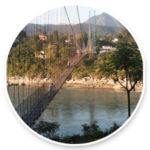 Devghat This is one of the most religious and cultural centers in Nepal located at the junction of Seti Gandaki and Krishna Gandaki Rivers. Holiest of holy, this place is of high religious significance to the Hindus. The area is home to some tropical forests, wild animals and birds that creates a perfect haven for nature lovers.
Devghat This is one of the most religious and cultural centers in Nepal located at the junction of Seti Gandaki and Krishna Gandaki Rivers. Holiest of holy, this place is of high religious significance to the Hindus. The area is home to some tropical forests, wild animals and birds that creates a perfect haven for nature lovers.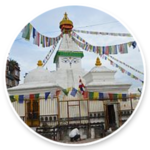
A symbol of Buddhist culture, the monastery is a unique piece of art in Bharatpur. Built by the Buddhists, the Lamasery is a reflection of peace and interior design of this structure reminds them of their life philosophy.
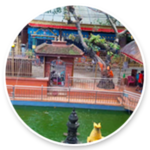
The temple is most sacred to Hindus and is a famous pilgrimage destination. It was built in the 15th century by Muni Makunda, the Palap king. People from all over Bharatpur come to pay homage to Lord Ganesh, every Tuesday.
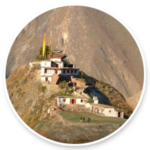
The old headquarters of Chitwan District, Upardanghari fort, was built by Satrubhanjan Shah to protect the newly-established kingdom from enemy attacks during the 17th century. The fort stands atop a hill overlooking a picturesque view of the city.

Built during the Rana regime, this ancient palace is situated inside the Chitwan national park. The venue is being used as the national park’s office and also houses a museum.

This modern architecture is located in the guesthouse of Bharatpur and used for playing indoor games.
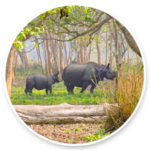
One of the famous parks in Nepal, the Chitwan National Park is a major tourist destination site that has dream-like greenery and is home to one of the world’s endangered one-horned rhinos. It is spread across an area of 932 sq.km and encompasses the districts of Nawalparsi, Chitwan, Parsa and Makwanpur. It was declared the World Heritage Site in 1984.

This park is situated in the Torikhet village and has a swimming pool. It is famous with the name Kamal Pokhari.
Bharatpur in News:
Following are some important news updates about the city:
- Fully Immunized District: In recent announcement, Bharatpur Metropolitan City declared Chitwan district as ‘fully immunized district’. So far, all children excluding those of ward no. 6 have been immunized. State Minister Padma Aryal strengthened the government’s commitment to provide medical care to all alike in the country and assured citizens that the obstacles in the medical sector will be removed.
- Engineering College in Bharatpur: Bharatpur is all set to receive its new engineering college that will be established as a JV by Tribhuvan University (TU) and Bharatpur Metropolis. TU agreed to give 40 baigha land out of its total 394 baigha. While the metropolis will focus on the related funds, the university will ensure provision of quality education.
- Modern City Hall in Bharatpur: Bharatpur’s Chitwan district will now own a state-of-the-art auditorium which will be able to host 5,000 audiences. The City Hall will have a smaller auditorium, food court, garden and parking spaces. The Ministry of Urban Development has already began arranged for the required budget for construction revealed Renu Dahal Bharatpur Metropolitan City’s Mayor.
- Technical and Vocational Education in Chitwan: Following a growing trend in Chitwan District, now more number of students are keen on taking up vocational education and in the technical field. Many schools and colleges offering these are being established as a result of this trend. Since the courses are of a shorter duration and relatively promising in terms of job placement, more number of SEE graduates are opting for these courses in pursuit of higher education.
- Bharatpur as Medical City: In a recent event held at Chitwan District, Nepal Communist Party Co-Chairman Pushpa Kamal Dahal expressed his commitment to transform Bharatpur into a ‘Medical City oF Nepal’. Addressing a symposium of health workers of Chitwan District, Dahal said “As more and more private and public health facilities are being set up in Bharatpur, it makes sense to develop the city as a medical city.”
- MoEWRI Unveils Master Plan: Bharatpur was identified among major electricity hotspots in Nepal. As part of its Transmission System Master Plan (TSMP), the ministry plans to transform Bharatpur as one of the main electricity hubs to develop 6,867 kilometers of transmission lines across Nepal. Barsha Man Pun unveiled TSMP at a program organized by Nepal Ministry of Energy, Water Resources and Irrigation (MoEWRI).
- Bharatpur Proposed for Cricket Stadium Construction: The Dhurmus Suntali Foundation (DSF) has finalized Bharatpur as the site for the international cricket stadium. According to the foundation, Chitwan is promising in terms of becoming in Nepal’s future capital. Earlier in 2018, Bharatpur Metropolitan City Mayor RenuDahal announced that land from Bharatpur city will be given to social activist SitaramKattelDhurmus for construction of the said International cricket stadium.
Bharatpur will sweep you away with its rapid urbanization but also keep you captured with Nepal’s spirit. Travel to this bustling city and take home some of Nepal’s magic.
Read Also:
- Pokhara – Tourism Capital of Nepal
- Nepal, The Perfect Tourism Destination
- Sarangkot – The Adventure Lover’s Paradise
- Biratnagar – Industrial Capital of Nepal
- Nepal’s Lumbini Among ‘Best in Asia 2018’
- Birgunj – Trade Gateway to Nepal
- Kathmandu: Nepal’s City of Glory!
The post Bharatpur: Nepal’s Center of Trade appeared first on Nepali Sansar.
]]>